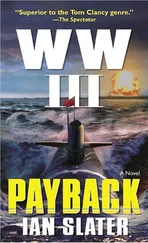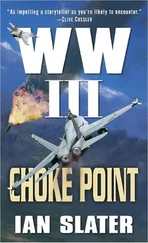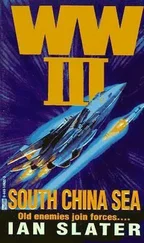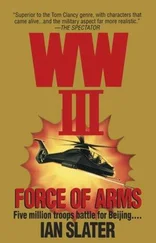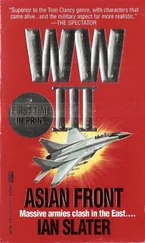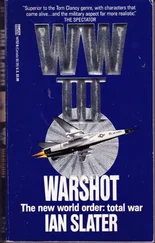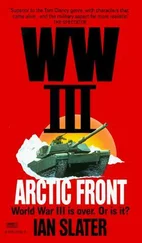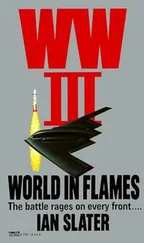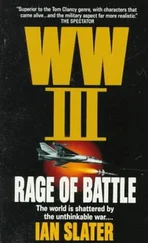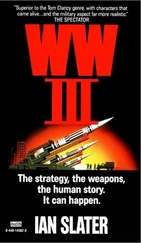“The characters written here,” Lee told Freeman, “indicate it’s a tunnel wide enough for two men.”
“How does the exit tunnel connect up to the three tunnels?” asked Freeman. He was having trouble reading the drawing overlaid with characters. “Does it go up from the fifty-foot area Ilya mentioned?”
“Yes,” confirmed Lee.
“Not a trap is it, Johnny?” pressed Freeman, brushing big, sloppy flakes of snow off the map. “I mean that dead son of a bitch Kegg and Marine Thomas wasted violated every military code, carrying around detail like that. Could it be a plant? Sucker us in?” Memories of “AMERICANS SUCK” were lit large in the general’s mind.
“No,” Lee replied confidently. “I don’t think so.” He turned to Melissa Thomas. “Was this terrorist you got the map from in Russian fatigues?”
It was a crucial question, but neither Melissa, Kegg, nor the corporal could vouch for the answer. He’d been pretty well covered in snow, and the Hummer with the rope had turned him over several times, but — maybe the two Caucasians had been dressed a little differently from the Korean, but the truth was that in the confusion and speed of the firefight none of the three marines could be certain. They’d all been looking at the dead men’s faces when the Hummer’s rope turned them over.
“I’m not sure,” said Melissa. “I’m sorry, General.”
“No problem. You did well.”
“Thank you, sir,” said Melissa. “Why’s it important about how he was dressed? The Korean, I mean?”
The general glanced over at Ilya. “Because my friend Ilya here tells me there’ve been a lot of Koreans working up here. So if the Korean terrorist you marines took out was a civil engineer, not an army type who wouldn’t or shouldn’t carry maps of the system, that’d lend credence to this scroll you found. It’d make sense for an engineer, army or not, to have this with him. It’d be like our tac maps.” He meant the tactical maps Colonel Tibbet, himself, and selected company commanders had to have. The general paused and, as casually as he could, asked Johnny Lee, “Any date on it?” And he watched Ilya, whose eyes were avoiding the general’s with such ill-disguised purpose that Freeman became more convinced that Lee’s answer would be critical.
“Yep,” said Johnny Lee. “It’s got intended and completion dates marked near all the separate tunnel stuff.”
“Hmm,” murmured the general. While the others were looking down at the map, he was watching Ilya again. “Any date on the exit tunnel, Johnny?”
“Yep. It’s dated—” Johnny turned the map around, placing it on a stump under cover of the fir’s branches, using two H K 9 mm mags to weight it down. “His calligraphy’s ornate, flowery, but it’s not really very neat.”
They could all hear the first “wokka-wokka” and “whoop-whoop” noises of approaching helos. Russian or American, no one knew; radio silence was complete.
“It—” began Lieutenant Johnny Lee, “I mean the exit tunnel is marked as having been completed two months ago!”
“That a fact?” said Freeman urbanely, his left hand accommodating an itchy spot beneath his Fritz, his right returning his 9 mm to its holster. “Funny,” he continued, hearing the approaching din of aircraft, and looking up high through the fir’s snow-packed branches at the invisible racket thundering directly overhead. The heavy pulsing in the snow-thick air told every one of the first wave’s marines spread out higgledy-piggledy in the landing snafu that they were either being reinforced by Yorktown ’s second wave or attacked by gunships.
Johnny Lee’s answer that the exit tunnel had been completed months ago was followed by such a cacophony from the helos that Freeman’s instruction to Ilya had to be delivered in his full command voice. “You were leading my men into a trap. We go in the entrance and your comrades — your comrades ,” shouted Freeman, “would be in there, lights out, waiting for us. A trap, you cunning son of a bitch!”
“No, no, General,” pleaded Ilya. “I didn’t know. No—”
Freeman slung the AK-74 over his left arm, jabbing his finger at Ilya. “You told me, you terrorist son of a bitch, that there was no exit yet, that it wasn’t completed!”
Ilya’s eyes told the general he’d run out of excuses. He was asking for mercy, having prevaricated with just enough of the truth to set up the trap that would have annihilated the Americans. Suddenly Ilya lunged at Freeman, pulling the general’s KA-BAR, bringing the knife up with such speed that Freeman, putting his hand on the pistol’s grip, ready to draw, had only a split second to “up” the holster, the gun still in it, and fire, the parabellum round exiting the canvas holster and striking the Russian in the chest, punching him back. He fell, staggered to his feet, taking Freeman’s second shot in the throat. His carotid artery, punctured, gushed blood, giving Freeman time for the third shot, the 9 mm slug ending the business in a flurry of snow as the Russian fell back onto the fir’s snow-laden branches, his blood staining the clumps of virgin snow that suddenly cascaded down from the tree’s branches, a denuded branch, relieved of its burden, springing up, rising another foot or two above the ground.
Now, in addition to the headache-inducing din of the armada of helos, Freeman’s team and Chester’s marines could hear another sound, which Melissa Thomas and Kegg recognized as the loud, ripping noise of machine-gun fire. It was coming from the helos above, which were invisible except as blips on the Hummer’s radar, and identified as enemy craft by Freeman’s and Chester’s infrared friend-or-foe helmet patches. The Hummer’s helo-experienced corporal identified the craft as Black Shark Kamov 50 attack helos and Hind transporters.
The Black Sharks and Hind transports were arriving head-on with the second wave of Joint Strike Fighter — escorted Super Stallions. No one thought it was anything but a rather deliberate, tactical ploy by the air force general, Cherkashin.
“He’s a hard son of a bitch,” pronounced Kegg.
“Who?” asked the Hummer corporal. What the hell was Kegg on about? “Do you mean Freeman, or the son of a bitch who sent his choppers in to fuck up our second wave? Cher — what’s his name? Cherkov?”
“Cherkashin,” Kegg corrected him. “No, I mean Freeman’s the hard-ass. Shooting POWs like that.”
“POWs, my ass,” cut in Aussie. “They were friggin’ terrorists. They’d sell their sister for two bits. Fuckin’ mercenaries. All of ’em.”
“So?” interjected the corporal. “Who made you Pope?”
“Listen, Sonny,” Aussie shot back, “you would’ve had your sorry ass in a trap if Thomas here hadn’t found that map.”
“What makes you think we’re not in one now?” said Kegg. “Maybe the map’s a trap.”
“Hey,” put in the front-door gunner, “map’s a trap. That’s a rap.”
“They’ll wrap your ass if I’m right,” said Kegg.
The front-door gunner had no response, or if he did, he left it unsaid. Everyone’s attention was drawn to the claustrophobic throbbing in the sky.
Despite the danger presented to him by the presence of the enemy helos, as a soldier Freeman had to admire Cherkashin’s strategy. With many of the inferior Russian radars whited out by snow and therefore posing a high risk of blue on blue amongst the Russian helos, Cherkashin, like Rommel in the France of ’44, had clearly decided that he must engage the Americans — in the air, in this case — before they had a chance to land in force and link up with the first wave. Much of the surprise Cherkashin was creating with this helo attack was due to sheer luck in obtaining an “unofficial loan” of the elite helos from the Siberian Sixth Armored’s air wing located just east of Spassk-Dalni, fifteen miles east of the lake’s southeastern shore. In fact, the air battle now under way had begun north of the lake as the MEU’s second wave of Stallions tried an end run around the northwestern half of the lake, hoping to come up behind the Russians that the McCain ’s SES had picked up even given the blizzard conditions over the lake. Cherkashin’s Black Shark helos, which NATO Commander Roger Hawkins had nicknamed “Werewolves,” had proved how good they were in tight turns of 3.5 Gs and dive speeds of 200 and more miles per hour with their 50T thermal imagers. The joint Russian-Israeli-built Erdogan version, with its pilot and copilot sitting in a NATO-weapons-compatible cockpit encased in 12.7 mm-proof armor plating and equipped with the world’s first operational helo rocket-assisted ejection system, was particularly deadly. One Super Stallion had already been shot down by an Erdogan’s rapid-firing 2A42 30 mm cannon, its pilot eschewing high-fragmentation rounds in favor of armor-piercing rounds. The gun’s virtuoso performance owed much to the shark-shaped helo having a coaxial rotor but no tail rotor, enabling it to perform a flat turn, its gun free to move through either an unrestricted vertical or horizontal circle as the Shark climbed and dived. With its two 2,200 horsepower, side-mounted turboshaft engines, the helo performed maneuvers that would have seemed impossible to an earlier generation of chopper pilots.
Читать дальше

